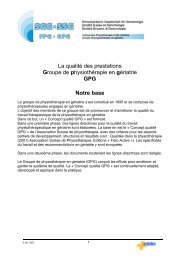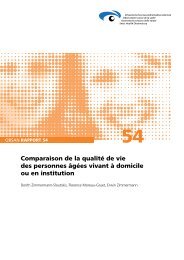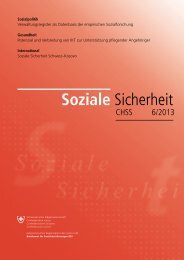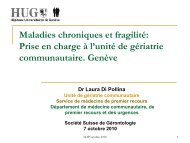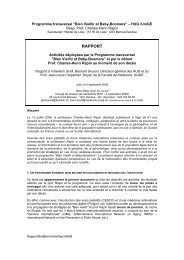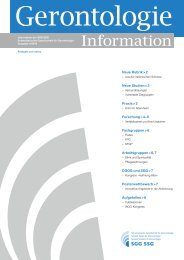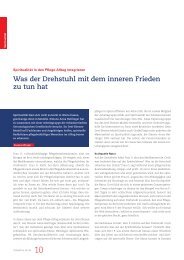Palliative care for older people - World Health Organization ...
Palliative care for older people - World Health Organization ...
Palliative care for older people - World Health Organization ...
You also want an ePaper? Increase the reach of your titles
YUMPU automatically turns print PDFs into web optimized ePapers that Google loves.
15Improving palliative <strong>care</strong> in resource-constrained settings“<strong>Palliative</strong> <strong>care</strong> is an urgent humanitarian needworldwide.”Source: <strong>Palliative</strong> <strong>care</strong> (1).There is unanimous agreement that good palliative<strong>care</strong> should reach everyone who needs it. Althoughproviding examples of palliative <strong>care</strong> <strong>for</strong> <strong>older</strong> <strong>people</strong>in resource-constrained settings such as Africa isbeyond the scope of this publication, includingsome reference to these settings is important <strong>for</strong>two main reasons.First, these countries greatly need better palliative<strong>care</strong>. Second, the European Region can learn fromsome of the developments in resource-constrainedsettings, where much is achieved in the communityon low budgets such as mobile hospices in Uganda(shown in photograph). Bus rounds could be atime-saving and cost-effective way of providingeducation in palliative <strong>care</strong> (Box 15.1).<strong>Palliative</strong> <strong>care</strong> is an emerging discipline in Africa.Although there are centres of excellence providingholistic palliative <strong>care</strong> and education, these tendto be few and cannot currently provide enoughpalliative <strong>care</strong> to appropriately respond to the HIVepidemic, to progressive malignant disease andto the yet-unknown burden of non-malignant,non-HIV-related deaths. Research and auditing areessential to capture the lessons learned, to guidethe wise allocation of scarce resources, to developfeasible and acceptable local models of palliative<strong>care</strong> and to ensure that <strong>people</strong> needing <strong>care</strong> andfamilies in resource-constrained settings receiveeffective <strong>care</strong>. The example shown in Box 15.2demonstrates the importance and feasibility oflocally owned measurement and improvement ofquality <strong>for</strong> <strong>people</strong> with progressive and advanceddisease and their families in resource-constrainedsettings.© Anne Merriman46




